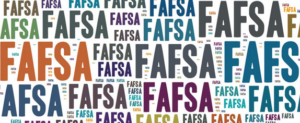Financial aid is money either loaned or given outright to help defray the cost of higher education. It comes in various types: scholarships, grants, loans and work-study jobs. The typical financial aid package is a combination of types of aid.
The federal government awards about $100 billion in student assistance every year. States, individuals, corporations, organizations and special interest groups award many millions more. Your share is there—all you have to do is go get it! But how, exactly? And how much can you get? Three abbreviations hold a host of answers.
1. FAFSA
The Free Application for Federal Student Aid is the key that unlocks all need-based college funds. You must fill out this form, listing your family’s assets, income, investments, debt and other household information, to obtain need-based aid from virtually any U.S. college, university or career school.
The FAFSA is a detailed form, but you only have to prepare it once, no matter how many college applications your student files. Preview the form at FAFSA.ed.gov. When you’re ready, complete the form online for easier tracking and faster processing.
2. EFC
The information on your FAFSA will be used to determine your Expected Family Contribution (EFC), or the amount you’ll be expected to pay.
3. COA
Your EFC will be subtracted from the college’s Cost-of-Attendance (COA), which is the sum of the tuition, room and board, books, transportation and any other costs for the program of study. What’s left over is the amount of aid for which you’ll be eligible.
Obviously, the amount of aid for which you qualify will change depending on each school’s COA. You’ll be eligible for less aid from a less expensive school and more from a more expensive one.
That’s why you should not rule out any school because you think it’s too expensive.
Tips
The early applicant gets the fattest financial aid package! Aid is awarded on a first-come, first-served basis, so file your FAFSA as soon after January 1 as you can. And fill it out carefully: hundreds of thousands of FAFSA applications are routinely returned for errors.

